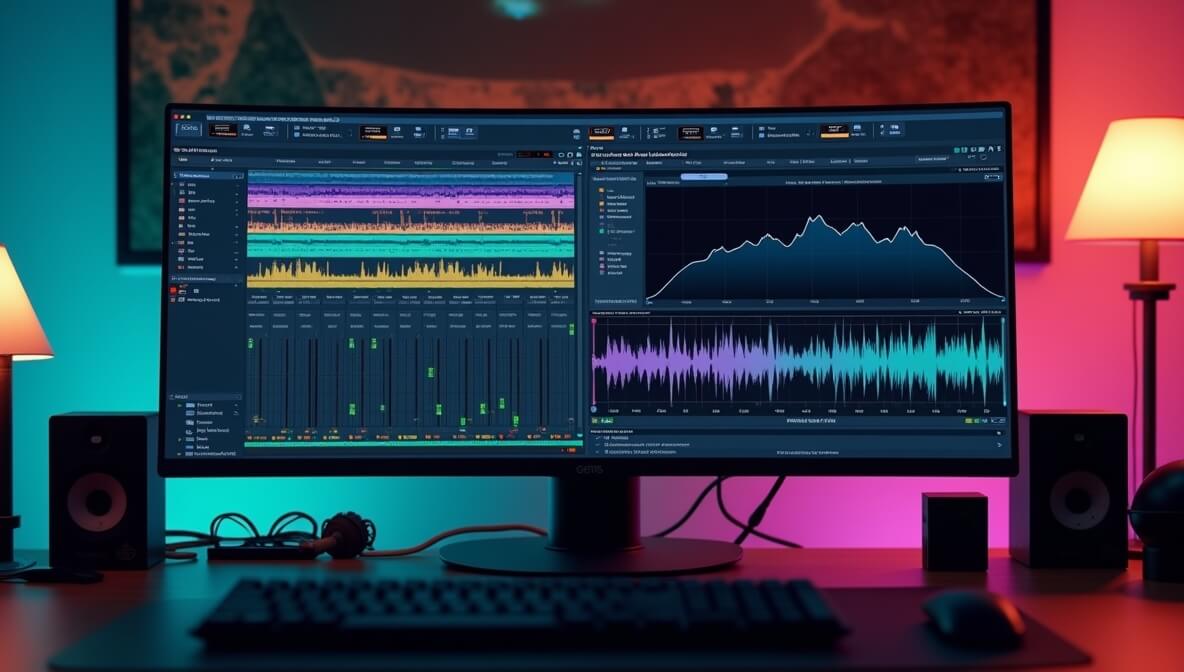August 14, 2025

A great song doesn’t just come from good lyrics or catchy melodies — it comes alive in the mix. Music mixing and mastering are the invisible hands that turn raw recordings into polished, release-ready tracks.
Think of mixing as the art of organizing and enhancing a track so that every element has its place, and mastering as the final polish that ensures your song sounds great on every speaker — from car stereos to club systems.
Whether you're just starting out in your bedroom studio or brushing up on the fundamentals, this in-depth guide will help you demystify the process, avoid common pitfalls, and improve your results.
At its core, mixing is about balance and clarity.
You take all the individual tracks — vocals, drums, guitars, synths, bass, FX — and blend them together to form a cohesive, emotionally impactful whole. But it’s not just about adjusting volumes. You’ll need to shape the sound using:
Let’s break down the fundamental tools you'll use in every mix:
EQ allows you to carve out sonic space. For example:
Dive deeper: Shaping Your Sound with EQ
Compression tames dynamic range — making quiet sounds louder and loud sounds quieter. This adds punch and consistency. Important parameters:
Start here: Compression Basics
Used properly, these add depth and ambiance. But use them poorly, and your mix turns to mud.
Learn how to keep depth without clutter: Reverb and Delay Guide
You can’t mix what you can’t hear. Before you blame your plugins or skills, ask: are you monitoring accurately?
See the full breakdown: Studio Monitors vs. Headphones
Clean recordings and proper gain staging start with a good interface. Even a basic 2-in/2-out interface gives:
Learn more: Understanding Audio Interfaces
Don’t just turn knobs at random — follow this proven process to build your mix logically.
1. Gain Stage First : Adjust all levels to avoid clipping. Keep your stereo output peaking around -6 dBFS for headroom.
2. Balance Faders : Before you touch EQ or reverb, mix with just volume and pan. If it doesn’t sound right dry, effects won’t save it.
3. Use EQ to Carve Space : High-pass unneeded low-end. Cut competing frequencies (like guitars clashing with vocals). Boost only if necessary.
4. Add Compression : Use light compression on vocals, bass, and drums. Don’t overdo it — aim for dynamics, not loudness.
5. Add Reverb & Delay : Think in layers: short reverb for intimacy, longer delays for width. Don’t drown your mix.
6. Reference Tracks : A/B your track with a commercial song in the same genre. Match tonal balance and loudness, not just vibe.
7. Final Touches : Automate volume, effects, or panning for transitions and dynamics. Less is more — make every move intentional.
No plugin beats a trained ear. Improve by:
Try this: Ear Training Exercises
Once your mix is done, mastering gets it ready for release.
The mastered track should sound consistent whether on:
Tools like iZotope Ozone or LANDR can help beginners master quickly.
Avoid these rookie errors:
Use this guide to fix them: Mixing with Clarity
You don’t need expensive gear to get pro-sounding results.
Full setup guide: Home Studio Essentials
If you’re producing beats or working digitally:
When you’re ready to share your track, don’t forget the final step: distribution.
Learn how to:
Start here: Music Distribution Guide
The real secret to improving your mixing/mastering skills?
Feeling stuck? These Plateau-Busting Strategies will keep you leveling up.
Stay up to date with the latest tips, expert insights, product reviews, and step-by-step guides to help you grow, create, and succeed—no matter your industry or passion.